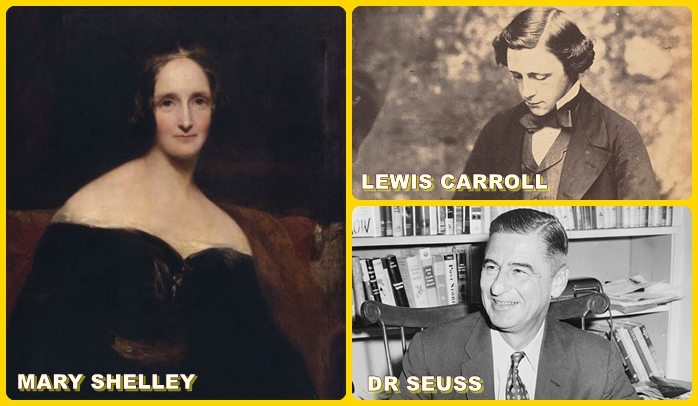How humble beginnings of seemingly ordinary folks propelled them to a totally different world
Some people are born to write, others become writers when hit on the head with a rock — literally or figuratively, it does not matter. I have a friend who didn’t know a thing about rules of grammar but when he got sidelined for a few weeks after a major surgery and ended a long-term relationship at the same time, he picked up a pen and paper to complete his first collection of poems and music, which he later published independently.
My point is that sometimes, life throws us a box of chocolates and we never know what we’re gonna get. These three classic writers met their fate with success by accident. Follow the example set by these amazing people and, who knows, get your life touched in a way you can never imagine.
#1 Lewis Carroll
At a young age, Carroll suffered from epilepsy and developed debilitating aura-hallucinating migraines. He was also deaf in one ear (caused by a childhood fever). He also might have had suffered from ADHD.
He was home schooled until adolescence, tall and awkward, spoke with a stutter, never married and counted mathematics and logic among his hobbies. He also loved taking pictures of little girls, one of whom was Alice Liddell.
One day during a boring riverboat trip Alice took with her two sisters and Carroll, she asked him to tell her a story. So he made up one verbally on the fly and much later wrote it down on paper at the girl’s request. The story, which ended up being one of the most beloved works of children’s literature of all time, was Alice in Wonderland.
Despite having a slowness of a turtle (writing 20 words a minute, a page of 150 words in seven and a half minutes, and 12 pages in two and a half hours), to this guy’s credit are 11 books of mathematics and 12 works of literary fiction.
#2 Mary Shelly
The year 1816 is known in history as “the year without summer” because of severe climate abnormalities, with average global temperatures dropping by 0.4–0.7 °C (0.72–1.3 °F). The cause: the powerful eruption of Mount Tambora in April of 1815 that killed tens of thousands of people on the Indonesian island of Sumbawa — the biggest volcanic eruption in human history.
Then 19-year-old Mary Wollstonecraft Godwin (later Mary Shelley) and her boyfriend, poet Bysshe Shelley were visiting Don Juan author Lord Byron at his estate in Switzerland. The crappy weather forced the party to stay indoors, settling to just have discussions on the pitfalls of being rich, famous and talented and the subject of Erasmus Darwin’s experiments with electrically reanimated frog chunks. Not enough enticing topics that Lord Byron suggested a scary storytelling contest among the group.
Mary’s ‘entry’ was the story of Frankenstein and his monster — all made up right at that moment, but wasn’t published until 1818. The book became a worldwide sensation and served as the basis for the Western horror story and the inspiration for numerous movies in the 20th century. She went on to edit two volumes of his husband’s works after he died by drowning in a sailing accident.
Developing into a respected writer in her later years, her other lesser-known works include The Fortunes of Perkin Warbeck, Lodore, Valperga, and the travel book History of a Six Weeks’ Tour, which recounts the continental tour she and Bysshe Shelley took in 1814 following their elopement and their summer near Geneva in 1816.
#3 Dr Seuss
Does any one not know Dr Seuss? We all know the author in his pen name, but this much beloved writer of children’s books was actually Theodor Seuss Geisel in real life — and far from being a doctor! He was very successful in his creative writing career. His books have sold over 600 million copies worldwide.
Originally, this guy wanted to be an English teacher, but his future wife encouraged him to give up his goal and pursue drawing instead. He followed his woman’s wishes and later married her, but they never did have any children of their own. He worked as political cartoonist for papers and magazines. Perhaps, it was because of his longing to be a father that he turned his attention to writing children’s books and doing the illustrations.
Come 1937, he published his first children’s book And to Think That I Saw It on Mulberry Street, which did not actually begin with massive success. Dr Seuss had to be turned down 27 times before the publisher Vanguard Press decided to take a chance on it — after he bumped into Dartmouth friend Mike McClintock, who that very morning had started a job as an editor in the publishing house’s children’s section. Under their wing, Dr Seuss’ book sold six million copies.
Throughout his career he published over 60 books, The Cat in the Hat and Green Eggs and Ham being two of his most famous works.

